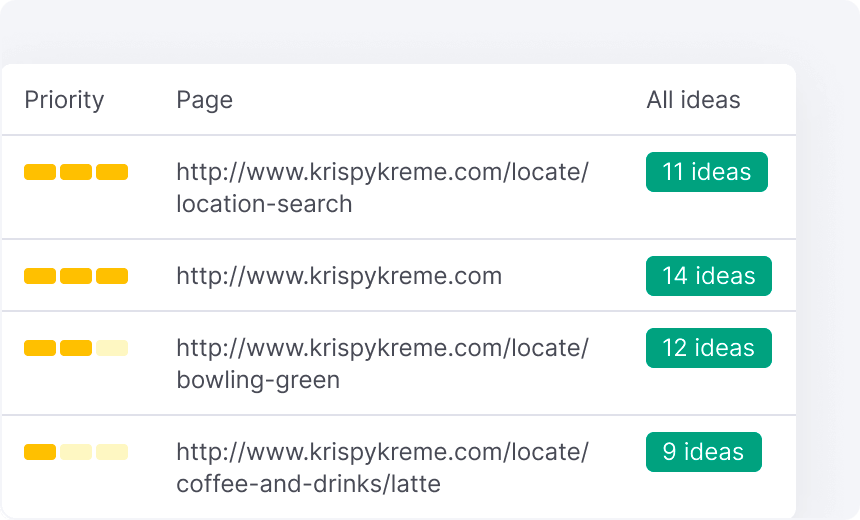Insights into What Is Not Considered a Default Medium in Google Analytics
Insights into What Is Not Considered a Default Medium in Google Analytics
Blog Article
Introducing the Unconventional Mediums in Google Analytics Beyond Default Setups
In the realm of digital analytics, Google Analytics stands as a cornerstone for companies looking for to understand their on the internet presence. While default settings provide valuable understandings, real depth of understanding hinge on checking out the unique mediums that commonly go unnoticed. By venturing past the surface area and delving into the details of social networks data, email campaign performance, reference traffic resources, direct website traffic patterns, and custom-made network collections, a bonanza of details waits for those happy to embrace a more nuanced approach. Nevertheless, what lies below these unique tools might just redefine how organizations perceive and plan their online efforts.

Leveraging Social Network Insights
Sometimes ignored, yet tremendously valuable, is the technique of leveraging social media sites insights within the realm of Google Analytics. By integrating data from systems like Facebook, Twitter, Instagram, and LinkedIn into Google Analytics, businesses can gain a deeper understanding of their target market and the effectiveness of their social media sites campaigns.
Through this combination, marketing professionals can track and analyze individual behavior on their website that originates from social media platforms. They can identify which social media networks are driving the most traffic, which content is reverberating with the audience, and which projects are converting the most leads. This understanding enables for data-driven decisions to maximize social media sites strategies and improve total marketing performance.
Additionally, by incorporating social media sites understandings with Google Analytics, services can create a lot more targeted and personalized campaigns - what is not considered a default medium in google analytics. They can use demographic info, passions, and on-line behaviors collected from social networks to refine their target market division and deliver customized messages that reverberate with particular consumer teams. This targeted strategy can result in greater involvement, boosted conversions, and inevitably, boosted return on investment
Discovering Email Campaign Efficiency
Revealing Email Campaign Performance entails examining vital metrics and efficiency indications to evaluate the efficiency of email marketing efforts. When diving into email campaign efficiency, it is vital to examine metrics such as open rates, click-through prices, conversion prices, and unsubscribe rates. Open rates indicate the percent of receivers who opened the e-mail, providing understanding into the efficiency of subject lines and sender names. Click-through rates gauge the portion of receivers who clicked web links within the email, revealing involvement degrees. Conversion prices track the percentage of receivers that finished a wanted activity after clicking a web link in the e-mail, such as signing or making an acquisition up for an e-newsletter. Unsubscribe prices highlight the number of recipients who opted out of obtaining additional e-mails, shedding light on email material high quality and significance. By evaluating these metrics, marketing experts can adjust their email projects for better engagement and efficiency.
Studying Reference Web Traffic Resources
After reviewing the efficiency of email projects with crucial metrics such as open prices and conversion prices, the next critical action is evaluating reference web traffic resources in Google Analytics to comprehend where site visitors are originating from and just how they engage with the site. Reference web traffic sources refer to the internet sites that route individuals to your site through clickable web links. By diving into this information, businesses can get understandings into which exterior platforms are driving traffic to their site, whether it be social This Site networks platforms, companion sites, or on-line directory sites.
It assists companies determine high-performing referral resources that contribute substantially to web site traffic and conversions. Google Analytics offers in-depth reports on reference web traffic, enabling organizations to track the efficiency of each recommendation resource properly and make data-driven decisions to improve their on-line visibility.
Discovering Straight Traffic Patterns
Checking out the direct website traffic patterns in Google Analytics supplies useful insights right into customer behavior and the effectiveness of campaigns - what is not considered a default medium in google analytics. Direct web traffic refers to visitors that arrive on an internet site by directly keying the URL into their browser, making use of book markings, or clicking on untagged official source links. Understanding direct website traffic patterns can help marketers examine the impact of offline advertising initiatives, brand name recognition, and the performance of word-of-mouth references
By delving into direct website traffic data, companies can reveal important information about individual intent and brand commitment. Assessing the behavior of direct visitors, such as the web pages they go to, the time invested in website, and the conversion price, can provide a deeper understanding of customer interaction and the general efficiency of the internet site in transforming site visitors into consumers.
Moreover, tracking straight website traffic patterns over time allows businesses to recognize fads, seasonality effects, and the success of specific projects or promotions in driving direct gos to. This information can then be made use of to fine-tune advertising and marketing approaches, optimize site content, and boost the general customer experience to maximize conversions.
Utilizing Custom-made Channel Groupings
Using custom channel groups in Google Analytics permits services to categorize and evaluate their website traffic based on certain standards, providing valuable understandings for optimizing advertising approaches. Customized channel collections make it possible for companies to create their own tailored groups of web traffic sources, such as social networks, natural search, e-mail projects, and recommendation web traffic. By defining these collections, organizations can acquire a much deeper understanding of exactly how various marketing networks add to their site web traffic and conversions.
This function is particularly helpful for services with varied marketing approaches across numerous platforms. A business running both paid and natural social media projects can differentiate in between the 2 to assess their specific performance precisely. Additionally, custom channel collections can aid identify any kind of overlooked or taken too lightly website traffic resources that may be driving important interaction.
Verdict

By venturing beyond the surface and delving right into the ins and outs of social media data, email project performance, referral website traffic sources, direct website traffic patterns, and custom-made channel groupings, a treasure chest of info awaits those prepared to welcome a much more nuanced approach. They can recognize which social media channels are driving the most traffic, which content is reverberating with the audience, and which projects are converting the most leads.After reviewing the efficiency of e-mail campaigns via essential metrics such as open rates and conversion rates, the following critical step is analyzing recommendation traffic resources in Google Analytics to recognize where web site visitors are coming from and how they connect with the site. Custom channel collections enable companies to produce their own tailored groups of traffic resources, such as social media, organic search, email projects, and referral traffic. By leveraging social media understandings, revealing e-mail project performance, analyzing recommendation website traffic sources, discovering straight web traffic patterns, and utilizing custom-made channel collections, marketers can gain important insights right into their on-line presence.
Report this page